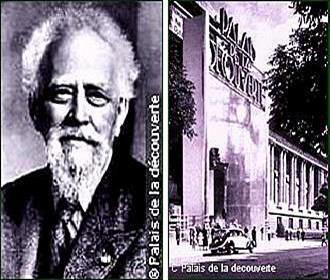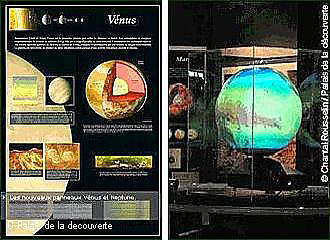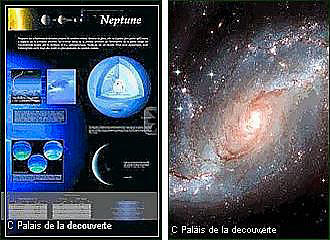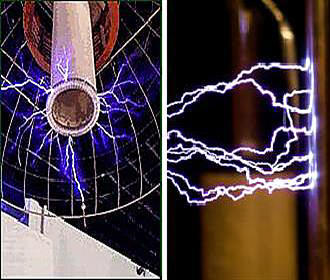Location is temporarily closed for repair works.
This is temporarily closed for major repair works that will continue for a few years. There is a temporary building called the Les Etincelles du Palais de la Decouverte, which is also an ephemere construction, and this is located on the Rue Saint Charles in the 15th Arrondissement.
https://www.palais-decouverte.fr/fr/accueil
Paris Palais de la Decouverte History
The Paris Palais de la Decouverte is a science discovery museum in Paris that is now part of the Universcience group with the Cite des Sciences et de l’Industrie, but this has been running since 1937 within a part of the Grand Palais that is located by the Avenue des Champs-Elysees in the heart of Paris.
The Idea of a Science Museum
The original idea came from a gentleman by the name of Andre Leveille, who was the vice-president of the Confederation of Intellectual workers, but nothing actually came of this at the time.
So it all started back in 1932 when the French physicist Jean Perrin, who won the Nobel prize in 1926 for his work on the atom, decided to start working on a science museum in Paris, with the idea that this could open up the fascinating world of science and discovery to the general public.
The project moved forward ready for the 1937 International Exposition of Art and Technology in Modern Life, which was to be held in Paris and the Grand Palais along with the Petit Palais were both built for the occasion.
Paris Palais de la Decouverte history the beginnings
A temporary science exhibition called Le Palais de la Decouverte opened its doors in the west wing of the Grand Palais on 24th May 1937.
Jean Perrin was determined to created a dynamic exhibition that covered all the sciences, but in a lively way that would appeal to the general public and he performed experiments in front of visitors and he even got people conducting experiments themselves.
And his aim was to enable visitors to see science in the making by opening up laboratories, so that people could witness new discoveries and get younger people more interested in science.
The temporary science exhibition was a resounding success and by the 5th September it had received 1 million visitors and by 30th November, two million visitors had experienced Le Palais de la Decouverte, which meant that it was soon to become a permanent museum.
Paris Palais de la Decouverte history 1938 onwards
Becoming a Paris museum in 1938 the Paris Palais de la Decouverte soon expanded and started to feature new exhibitions with the first most notable one being called Animal biology: sexuality, which first opened in 1939 and this was follows by Termites in 1940.
In the same year it also became part of the institute of the University of Paris, however, World War II was hitting Paris hard and unfortunately in 1944 the Grand Palais was damaged by fire during the Liberation of Paris.
But after World War II came to an end and the Grand Palais had been restored, the museum was back in full swing, yet it was a few years later before the Paris Palais de la Decouverte saw any new sections open.
In fact, it was not until 1957 that a Nuclear Energy section opened and this was followed in 1962 by a new Electrostatics section. Then in 1967 there were three different sections that opened entitled Radio Astronomy, Thermodynamics and Geology and in 1970 the museum was expanded again and saw the new Space and Meteorology sections open up.
These were followed by a new Electronics section in 1971, and in the same year a Franco-Czechoslovak travelling exhibition entitled Bels, Decibels and Phons was organised with the National Technical Museum in Prague. And it was this event that marked the beginning of travelling exhibitions and cooperation between different science museums.
1974 saw a new section entitled Man and His Food open, followed by a Computer Science section in 1981 and 1988 there was another new exhibition added, which was called Biology in the Service of Man, and this very same year, the French President, Francois Mitterrand celebrated the museums 50th anniversary.
However, the Paris Palais de la decouverte has still continued to expand with even more new exhibitions being opened including the Eureka room that was inaugurated by the Minister of Education, Lionel Jospin in 1989 and then in 1994 saw the new Planetarium open.
It was in 1996 that the museum open up the Cybermetropole where its visitors could discover the internet, and the most recent addition was in 2009 when an exhibition called Light opened its doors to the public.
And so, from the humble beginnings of what was meant to be a temporary science exhibition for the World Fair, this has now turned into a fabulous science museum for the general public, that is also now linked with the other incredible and largest science museum in Europe called the Cite des Sciences, which is located in the Parc de la Villette in Paris.



